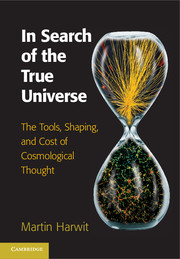Book contents
- Frontmatter
- Contents
- Preface
- Notes on Usage
- 1 The Nineteenth Century's Last Five Years
- Part I The Import of Theoretical Tools
- Part II A National Plan Shaping the Universe We Perceive
- Part III The Cost of Discerning the True Universe
- 14 Organization and Functioning of the Astronomical Community
- 15 Language and astrophysical Stability
- 16 An Economically Viable Astronomical Program
- Epilogue
- Appendix: Symbols, Glossary, Units and Their Ranges
- Index
- References
14 - Organization and Functioning of the Astronomical Community
Published online by Cambridge University Press: 05 December 2013
- Frontmatter
- Contents
- Preface
- Notes on Usage
- 1 The Nineteenth Century's Last Five Years
- Part I The Import of Theoretical Tools
- Part II A National Plan Shaping the Universe We Perceive
- Part III The Cost of Discerning the True Universe
- 14 Organization and Functioning of the Astronomical Community
- 15 Language and astrophysical Stability
- 16 An Economically Viable Astronomical Program
- Epilogue
- Appendix: Symbols, Glossary, Units and Their Ranges
- Index
- References
Summary
Whether we ultimately succeed or fail in determining the origin and early evolution of the Universe is likely to be determined by two competing factors. The first is the extent to which the high-temperature phases prevailing in the early Cosmos may have eradicated all memory of preceding epochs at the dawn of time; the second is the monetary cost of searching for shards of information that may have escaped erasure so we might recover and analyze the fragmentary surviving evidence.
The Larger Network in Which Astronomy Is Embedded
A part of the difficulty of accounting for the conduct and progress of astrophysics, even considering all the influences I have already cited, is that the field cannot be fully isolated from the far larger setting in which it is embedded.
Modern astronomy is expensive and competitive. It is expensive because powerful instrumentation is costly, whether it be telescopes or supercomputers. It also has to remain competitive because the cost of astronomical projects has to be justified at a national level where astronomy competes with other sciences for limited resources.
Seen from the perspective of an individual astronomer, these two factors lead to the need to continually justify the funding and potentially also the observing time required to initiate a project. First and foremost, this involves persuading the larger community of working astronomers to agree to the funding. Persuasion and its associated political activity within the field is part and parcel of the work of almost every established astrophysicist.
- Type
- Chapter
- Information
- In Search of the True UniverseThe Tools, Shaping, and Cost of Cosmological Thought, pp. 309 - 328Publisher: Cambridge University PressPrint publication year: 2013



